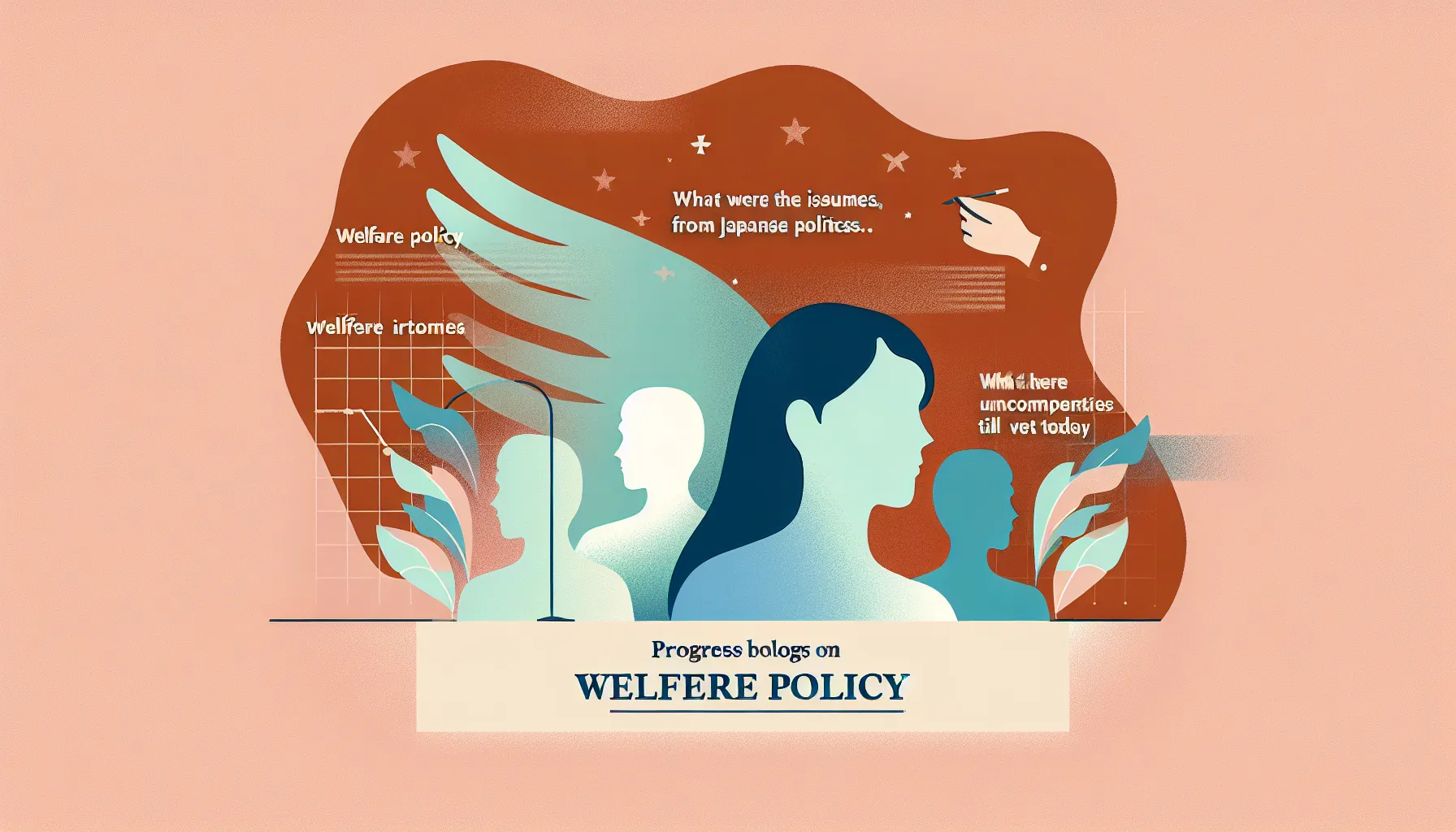As we look around, it’s clear that our society is changing rapidly, especially when it comes to demographics. The aging population is no longer just a statistic; it’s a reality that impacts every aspect of our lives. Understanding how to address the challenges posed by an aging society is crucial for creating a better future for everyone, from the elderly themselves to their families and communities.
In this article, we’ll explore various measures being implemented to tackle the effects of aging. We’ll take a closer look at government initiatives, community efforts, and individual strategies that aim to improve the quality of life for seniors. By learning from successful examples and innovative approaches, we can all contribute to a more inclusive society that values and supports its aging members.
Join us as we delve into the current status of an aging society, highlight the challenges we face, and uncover the real solutions that can pave the way for a brighter future. Together, we can make a difference and ensure that everyone can thrive, regardless of age.
- Discover the current challenges of an aging society and their impacts.
- Learn about effective government policies and community initiatives supporting the elderly.
- Explore individual strategies for health maintenance and family support.
Current Status and Challenges of an Aging Society
Progress of Aging and Its Impacts
The aging population isn’t just a statistic; it’s a growing reality that significantly influences our daily lives. As more individuals reach retirement age, we see an increase in the demand for various services, from healthcare to social support. This shift also affects the workforce, with fewer young people entering the job market to replace retiring workers. It’s essential for us to recognize these changes and understand their implications on the economy and community dynamics.
Moreover, the needs of older adults can vary widely. Some may require assistance with daily tasks, while others seek opportunities to remain active and engaged. This diversity in needs calls for a comprehensive approach to addressing the challenges of an aging society. We need to foster environments where seniors can thrive, enjoy their independence, and contribute to their communities in meaningful ways.
As we explore these issues, we also find that the aging process can bring about significant emotional and psychological impacts. Loneliness, for example, is a common concern among older adults, often leading to decreased mental health and overall well-being. By tackling these emotional challenges, we can create a more supportive atmosphere for our aging population.
- Aging impacts various aspects of society, from healthcare to workforce dynamics.
- The diversity of needs among older adults requires tailored solutions.
- Addressing emotional challenges, like loneliness, is critical for well-being.
Changes in Living Environments for the Elderly
As society adapts to the realities of an aging population, we are witnessing substantial changes in living environments designed for seniors. More communities are now emphasizing accessibility and inclusivity, ensuring that public spaces and homes cater to the needs of older adults. This shift is not just about physical modifications; it also involves creating a culture of support and understanding.
In addition, technology is playing a pivotal role in transforming how elderly individuals live independently. From smart home devices that assist with daily tasks to online platforms that connect seniors with peers and services, innovation is making a significant difference. These advancements not only enhance convenience but also promote a sense of security and empowerment among older adults.
Lastly, community involvement is crucial in fostering supportive environments for seniors. Initiatives that encourage intergenerational interactions, such as volunteer programs or community gardens, help bridge the gap between age groups. By creating spaces where different generations can collaborate and learn from one another, we can build stronger, more resilient communities.
- Living environments for seniors are becoming more accessible and inclusive.
- Technology is enhancing independence and security for older individuals.
- Community initiatives promote intergenerational connections and support networks.
Government Initiatives and Policy Changes
Overview of Past Policies
As we think about how to support an aging society, it’s important to reflect on the policies that have shaped our approach over the years. Historically, many governments have focused on providing basic assistance to the elderly, primarily through pension systems and healthcare services. These policies have laid the groundwork for a safety net, but they often did not address the diverse needs of older adults.
In the past, there was a tendency to view aging primarily as a challenge, leading to reactive policies rather than proactive ones. This meant that many programs were designed to manage issues after they arose, rather than preventing them in the first place. As a result, the focus was often limited to healthcare and financial support, leaving out other crucial aspects such as community engagement and emotional well-being.
However, as our understanding of aging continues to evolve, so too do the policies aimed at supporting seniors. The shift towards a more holistic approach has been gradual, with advocates pushing for comprehensive measures that encompass various aspects of life for older adults. This change is essential for creating a society where seniors can thrive and contribute positively.
- Historical policies primarily focused on financial and healthcare support.
- Reactive measures often overlooked emotional and community needs.
- A gradual shift towards a more holistic understanding of aging is underway.
Current Policies and Their Effects
Today, governments are beginning to implement more innovative policies that reflect the changing landscape of an aging society. For instance, we see an increase in programs aimed at promoting active aging, encouraging seniors to stay physically and socially engaged. These initiatives often include fitness programs, social clubs, and educational workshops that cater specifically to older adults.
Moreover, current policies are increasingly focusing on accessibility in both public and private spaces. This includes everything from transportation services to housing modifications that enable seniors to live independently. By prioritizing accessibility, communities can ensure that older adults have the opportunity to participate fully in society, enhancing their quality of life.
These policy changes are already having a noticeable impact. Many seniors report feeling more empowered and connected to their communities, which helps combat feelings of isolation. As we continue to explore effective measures for an aging society, it’s clear that thoughtful policies can lead to positive outcomes for everyone involved.
- Innovative policies promote active engagement for seniors.
- Focus on accessibility enhances independence and community participation.
- Positive impacts are already being felt, reducing isolation among older adults.
The Role of Local Communities
Examples of Elderly Support in Communities
Local communities play a vital role in supporting an aging population. They often serve as the first line of defense when it comes to meeting the needs of seniors. Many towns and cities have initiated programs to provide essential services, such as meal delivery and transportation assistance. These services help seniors maintain their independence while ensuring they have access to the resources they need.
In addition to practical support, communities are increasingly focusing on creating social spaces for older adults. Community centers, for instance, are becoming hubs for activities tailored to seniors, from fitness classes to art workshops. These initiatives not only promote physical health but also foster social connections, reducing feelings of isolation. It’s encouraging to see how such programs can significantly enhance the quality of life for older individuals.
Moreover, community engagement is key to identifying the specific needs of seniors. By involving seniors in the planning and implementation of support programs, communities can ensure that the services offered truly resonate with their needs. This collaborative approach empowers older adults and enhances their sense of belonging within the community.
- Local communities provide essential services like meal delivery and transportation.
- Community centers offer activities tailored to seniors, promoting social connections.
- Involving seniors in program planning ensures that their needs are met.
Community Revitalization and Elderly Participation
Revitalizing communities is not just about physical infrastructure; it’s about creating an environment where seniors can thrive. As neighborhoods evolve, there is a growing recognition of the importance of elderly participation in community life. When older adults are actively involved, they bring a wealth of experience and knowledge that enriches the community as a whole.
One effective strategy for revitalization is to encourage intergenerational collaboration. Initiatives that connect younger and older generations can lead to innovative solutions for community challenges. For example, mentorship programs where seniors share their skills and experiences with youth can foster mutual respect and understanding. This not only benefits the participants but also strengthens community bonds, making neighborhoods more resilient.
Additionally, many communities are harnessing the power of technology to engage seniors. Online platforms that facilitate communication and collaboration among residents can help older adults stay connected and informed. These digital tools can also assist in organizing local events and activities, making it easier for seniors to participate in community life.
Finally, it’s essential for local governments to support these efforts by providing funding and resources for community-led initiatives. By investing in programs that promote elderly participation, we can create vibrant, inclusive communities where everyone, regardless of age, can contribute and thrive.
- Encouraging elderly participation enriches community life and fosters collaboration.
- Intergenerational programs build respect and understanding between age groups.
- Technology can enhance communication and engagement for seniors.
- Local governments play a crucial role in supporting community-led initiatives.
Individual Countermeasures and Preparing for the Future
Health Maintenance for the Elderly
As we move towards a future with an increasingly aging population, health maintenance becomes a crucial aspect of ensuring quality of life for seniors. It’s important for older adults to stay proactive about their health, incorporating regular exercise and balanced nutrition into their daily routines. This focus on health not only helps prevent chronic illnesses but also enhances overall well-being.
Encouraging seniors to engage in physical activities—whether it’s walking, swimming, or participating in group fitness classes—can significantly improve their mobility and mental health. Additionally, having access to health screenings and preventive care services is vital. This proactive approach can empower older adults to take charge of their health and lead fulfilling lives.
- Regular exercise is essential for maintaining mobility and mental health.
- Balanced nutrition plays a crucial role in preventing chronic illnesses.
- Access to health screenings and preventive care is vital for seniors.
Ways Family and Surroundings Can Support
The support of family and the surrounding community is invaluable for seniors as they navigate the challenges of aging. Family members can play a pivotal role in encouraging healthy habits and providing emotional support. Regular check-ins, whether in person or through phone calls, can help combat feelings of loneliness and isolation that many older adults experience.
Moreover, creating a supportive home environment is essential. Simple adjustments, like ensuring that living spaces are safe and accessible, can greatly enhance an elderly person’s quality of life. Additionally, involving seniors in family activities fosters a sense of belonging and purpose.
Local communities also have a responsibility to support their aging members. Establishing programs that encourage intergenerational connections can help bridge the gap between age groups. When families and communities come together to support older adults, it creates a more inclusive atmosphere where everyone can thrive.
Overall, maintaining the health and well-being of our elderly population requires a collective effort from both families and communities. By working together, we can ensure that seniors feel valued, supported, and empowered to lead active, fulfilling lives.

この記事に興味を持たれた方は、こちらの記事「Exploring Solutions for Aging: Practical Ways to Protect Mind and Body!」もぜひご覧ください。高齢化社会での心身の健康維持やコミュニティ支援について、具体的な対策を詳しく紹介しています。
- Family can encourage healthy habits and provide emotional support.
- A supportive home environment enhances quality of life for seniors.
- Community programs that foster intergenerational connections are beneficial.
- Collective efforts from families and communities are vital for elderly well-being.
Summary
As we reflect on the measures for an aging society, it’s evident that the collective effort of individuals, families, communities, and governments is crucial. The aging population presents unique challenges, but by fostering supportive environments and promoting active engagement, we can enhance the quality of life for seniors. Initiatives that prioritize accessibility, emotional well-being, and intergenerational connections are essential for creating a society where everyone can thrive, regardless of age.
In conclusion, it’s important to remember that addressing the needs of our elderly population is not just a responsibility; it’s an opportunity for growth and enrichment for all. By working together, we can build a future that values the contributions of seniors and ensures their voices are heard in every aspect of community life.
- The aging population requires tailored solutions to meet diverse needs.
- Community involvement and government initiatives are vital for supporting seniors.
- Health maintenance and emotional well-being are essential for a fulfilling life in older age.
We would love to hear your thoughts on this topic! What measures do you believe are most effective in supporting an aging society? Feel free to share your insights in the comments below.



Comment